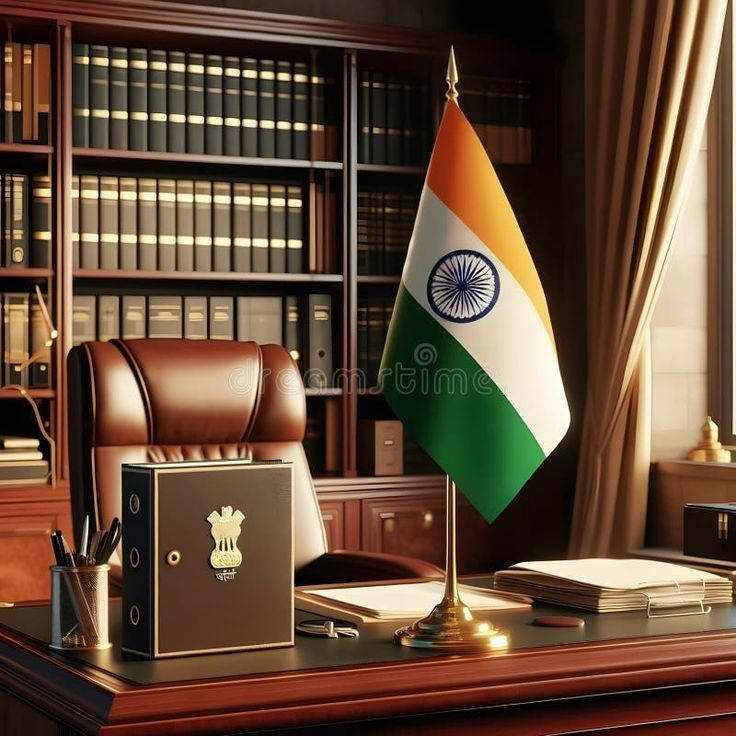The Judiciary as the Guardian of the Constitution
The Indian Judiciary is the guardian of the Constitution of India and protector of citizens’ fundamental rights. To maintain its independence and integrity, the process of appointing judges to the Supreme Court and High Courts has been carefully designed under the Constitution.
The framers of the Constitution envisaged a system where judicial appointments are free from political pressure and executive interference. The provisions for appointment of judges are primarily contained in Articles 124 to 147 (for the Supreme Court) and Articles 214 to 231 (for the High Courts). Over the years, the interpretation of these provisions by the Supreme Court has evolved through landmark judgments, leading to the creation of the Collegium System.
The evolution of this process highlights the delicate balance between the executive’s role in appointments and the judiciary’s autonomy, ensuring the rule of law and constitutional supremacy.
Constitutional Provisions for Appointment of Supreme Court Judges
The appointment of judges to the Supreme Court of India is governed by Article 124 of the Constitution.
(a) Chief Justice of India (CJI):
According to Article 124(2), the President of India appoints the Chief Justice of India after consultation with the judges of the Supreme Court and the High Courts as he deems necessary. Traditionally, the senior-most judge of the Supreme Court is appointed as the CJI, following the principle of seniority.
(b) Other Judges of the Supreme Court:
The President appoints other judges of the Supreme Court after consultation with the Chief Justice of India and such other judges of the Supreme Court and High Courts as he deems necessary.
To be appointed as a judge of the Supreme Court, a person must:
- Be a citizen of India, and
- Have been a judge of a High Court for at least five years, or
- Been an advocate of a High Court for at least ten years, or
- Be, in the opinion of the President, a distinguished jurist.
These constitutional provisions aim to ensure that only individuals with impeccable qualifications and integrity are elevated to the highest court of the land.
Constitutional Provisions for Appointment of High Court Judges
The appointment of High Court judges is provided under Article 217 of the Constitution.
(a) Chief Justice of the High Court:
The President of India appoints the Chief Justice of a High Court after consultation with the Chief Justice of India, the Governor of the concerned state, and, in some cases, the Chief Justice of the High Court concerned if a new Chief Justice is being appointed.
(b) Other Judges of the High Court:
Other judges of a High Court are also appointed by the President after consultation with the CJI, the Governor of the state, and the Chief Justice of that High Court.
Eligibility for appointment as a judge of a High Court requires that the person:
- Is a citizen of India, and
- Has held a judicial office in India for at least ten years, or
- Has been an advocate of a High Court for at least ten years.
The consultative process ensures that both the executive and judiciary play roles in judicial appointments, safeguarding institutional balance and merit-based selection.
Evolution of the Judicial Appointment System – From Consultation to Collegium
Initially, the Constitution adopted a consultative process where the President (executive) had the final authority to appoint judges after consultation with the judiciary. However, over time, concerns arose regarding executive dominance, leading to judicial intervention through landmark cases known as the Judges Cases.
(a) The First Judges Case (S.P. Gupta v. Union of India, 1981)
The Supreme Court held that the President was not bound by the CJI’s advice, giving the executive primacy in judicial appointments.
(b) The Second Judges Case (Supreme Court Advocates-on-Record Association v. Union of India, 1993)
This case overruled the earlier decision and established that the CJI’s opinion, formed collectively with senior judges, would have primacy. This marked the birth of the Collegium System.
(c) The Third Judges Case (1998)
The Supreme Court clarified that the Collegium would consist of the CJI and four senior-most judges for appointments to the Supreme Court, and the CJI and two senior-most judges for High Court appointments.
The Collegium System, therefore, shifted the power of appointments from the executive to the judiciary, ensuring judicial independence.
The NJAC Act and the Judicial Response
In 2014, the Parliament enacted the National Judicial Appointments Commission (NJAC) Act and the 99th Constitutional Amendment to replace the Collegium System. The NJAC proposed a commission comprising members from both the judiciary and executive, aiming to make the process more transparent.
However, in Supreme Court Advocates-on-Record Association v. Union of India (2015), the Supreme Court struck down the NJAC Act as unconstitutional, holding that it violated the independence of the judiciary, which is a part of the Basic Structure of the Constitution.
The Court reinstated the Collegium System, emphasizing that judicial independence must be protected from external influences. Despite criticisms about lack of transparency, the Collegium remains the current mechanism for appointing judges in India.
Real-Time Example: Appointment of Judges under the Collegium System
A recent example of the Collegium System in action was the appointment of Justice D.Y. Chandrachud as the Chief Justice of India (2022). The appointment followed the established convention of seniority and Collegium recommendation. Similarly, the Supreme Court Collegium frequently recommends names for High Court judges, which are then forwarded to the President for approval.
At times, the government has returned recommendations for reconsideration, but as per constitutional practice, if the Collegium reiterates its recommendation, the President is bound to appoint the judge. This reflects the checks and balances inherent in the process and ensures that no single authority dominates judicial appointments.
Significance of the Appointment Process
The process of appointing judges is vital to preserving the independence, impartiality, and efficiency of the judiciary. A transparent and balanced appointment mechanism ensures that:
- Only qualified and competent individuals serve as judges.
- The judiciary remains independent of political influence.
- Public confidence in the judicial system is maintained.
The Supreme Court and High Court judges play a crucial role in interpreting laws, protecting constitutional rights, and ensuring justice. Hence, their selection must be free from bias, corruption, and political interference, reflecting the democratic values enshrined in the Preamble of the Constitution.
Conclusion: Striking a Balance Between Independence and Accountability
The appointment of judges to the Supreme Court and High Courts in India demonstrates the Constitution’s commitment to judicial independence and accountability. While the executive plays a consultative role, the judiciary’s Collegium System ensures that appointments are based on merit and integrity rather than political considerations.
However, the ongoing debate regarding transparency and reform of the Collegium System indicates that the process must evolve to meet contemporary expectations of openness and accountability. Ultimately, maintaining the independence of the judiciary while ensuring public trust remains the cornerstone of India’s constitutional democracy.
Mnemonic to Remember the Appointment Process – “C.O.L.L.E.G.I.U.M.”
To easily remember the judicial appointment process, use the mnemonic “C.O.L.L.E.G.I.U.M.”
- C – Consultation (Article 124 & 217) – Between President, CJI, and senior judges.
- O – Opinion of CJI – Holds primacy in appointments.
- L – Landmark Cases – 1st, 2nd, and 3rd Judges Cases shaped the system.
- L – Legal Framework – Articles 124–147 (SC) and 214–231 (HC).
- E – Executive Role – President formally appoints judges.
- G – Governor’s Consultation – Required for High Court appointments.
- I – Independence of Judiciary – Protected as part of the Basic Structure.
- U – Unconstitutional NJAC (2015) – Struck down to preserve independence.
- M – Merit and Integrity – Core principles guiding appointments.
Mnemonic Meaning: “C.O.L.L.E.G.I.U.M.” reminds that the judiciary’s appointment process is built on Consultation, Legal authority, and Independence, safeguarded through Merit and Judicial Integrity.
About lawgnan
Discover the process of judicial appointments in India at Lawgnan.in. Understand how judges of the Supreme Court and High Courts are appointed under Articles 124 to 231, and explore the evolution from consultation to the Collegium System through landmark Judges Cases. Learn why the NJAC Act was struck down and how the Collegium safeguards judicial independence. This guide is essential for law students, UPSC aspirants, and judiciary exam candidates seeking clarity on constitutional provisions and judicial accountability. Visit Lawgnan to master how India’s judiciary truly acts as the guardian of the Constitution.




